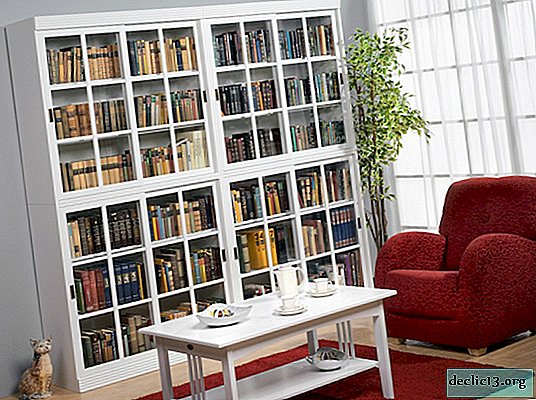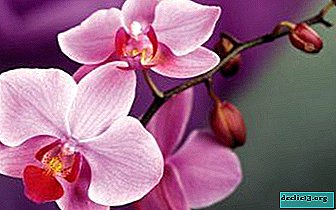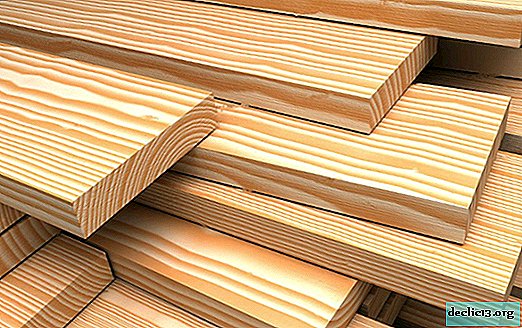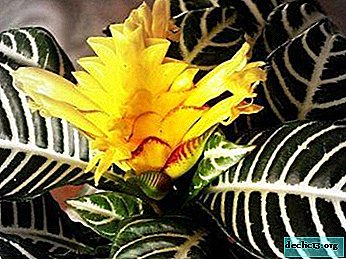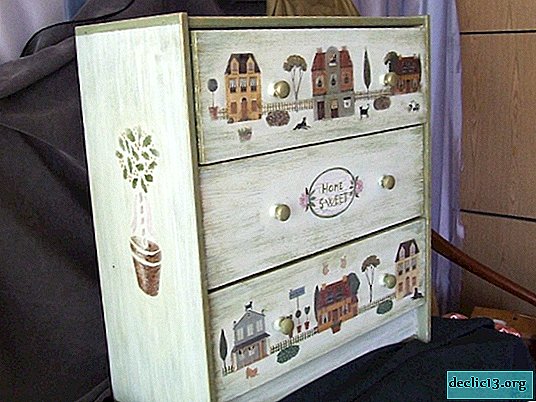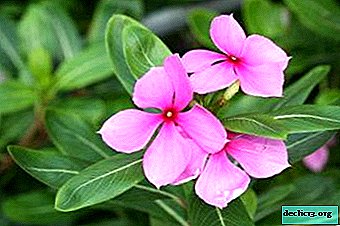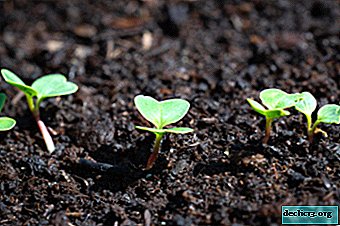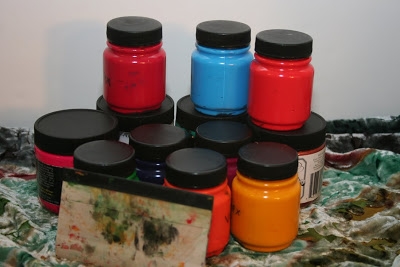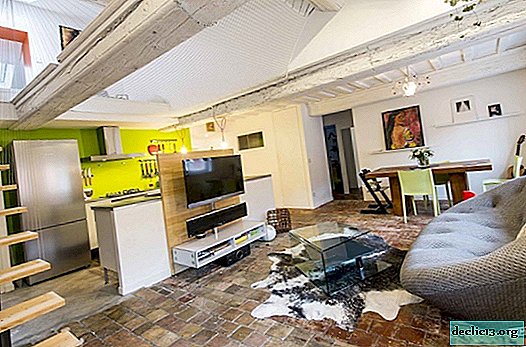How is the evergreen begonia planted and cared for at home and in the open?

We find excellent begonia not only in apartments on window sills, but also in clubs of parks and flower beds. She gained her popularity because of her bright, beautiful flowers, similar to roses and peonies at the same time.
The main types of this lovely flower, methods and features of its cultivation will be discussed in our article.
We will also be able to find out what pests it is subject to. You will see many interesting photos of this beauty.
History of occurrence
Begonia got its name from the name of the famous French statesman Michel Begon, who, during a trip to the Antilles at the end of the 17th century, discovered this bright plant and gave it a description. Today, the flower grows in a natural environment in America, Africa and Asia. But you can grow it at home in any corner of the world.
ATTENTION: Begonia grows in various ways: grass crawling on the ground, shrubs or tall erect bushes.Indoor crops are conventionally divided into two groups - flowering and deciduous. Decorative and deciduous begonia varieties have original color and shape of leaves.
Flowering varieties are divided into three main groups: tuber, evergreen and bushy. Today in the world there are more than 900 species of begonias and about 2 thousand hybrids of this beautiful flower are known.
Botanical Description
Begonia Elatior is a perennial herbaceous plant, an ever-flowering hybrid variety. Due to its year-round flowering and sufficient unpretentiousness to environmental conditions, today it is considered the most popular flower for growing in the garden and at home. You will find all the subtleties and nuances of caring for Elatior begonia in this article.
This species is distinguished by large, similar in shape to roses or anemones, flowers 3-5 cm in diameter of the brightest colors: from pale pink, white, yellow and orange, to bright red and salmon. In height, this flower rarely reaches 40 cm. On its massive sturdy stalk, dense, elongated leaves grow, resembling hearts in shape, decorated with serrated edges.
The outer plates of leaflets are bright green. Their undersides are dull, bright and have well-developed veins. The root system of this begonia is underdeveloped, so shallow pots with a diameter equal to height are suitable for cultivation.
Photo
Below you can see a photo of a flowering plant:





When and how to transplant a plant from a store?
If you If you bought the already blooming begonia Elatior in the store, you can’t transfer it immediately to another potas the flower may die. You need to wait until the flowering ends and only after the plant has gained mass and its roots begin to appear from the drain holes, you can proceed to the transplant procedure. Things to keep in mind:
- Since the plant is very tender, when transplanting, you need to be especially careful with the root system, since damaged roots can "inflame", begin to rot and the plant will eventually die.
- The soil mixture should ideally fit this particular begonia variety. You can buy it right away with a flower in a specialty store, or cook it yourself at home. Its composition: leaf soil (1/2 pot), peat and humus in equal proportions.
- After a successful transplant, the plant will need high-quality and thorough care.
Creating the right environment
Everblooming begonias are not too whimsical and do not require complicated care.. But for their flowering to continue throughout the year, they need the right fertilizing, the right lighting and rejuvenation every few years. Both experienced and beginner florist will cope with these tricks.
Lighting
Everblooming hybrids adapt perfectly to different types of lighting, with the exception of direct and bright sunlight, especially in the summer. It is most useful to place flowers on the western and eastern windowsills. In winter, due to a lack of natural light outside the window of the plant, it is recommended to illuminate with special lamps with ultraviolet light.
IMPORTANT: During the entire flowering period, begonias should not be rotated or moved, as a sharp change in the light source can trigger dropping buds and flowers.During the entire flowering time, begonia cannot be rotated and moved to another place. With a sharp change in lighting, the plant may begin to act up, dropping buds and flowers.
Temperature
Luxuriously flowering begonias are quite unpretentious to the environment. But in winter, it is still not recommended to exceed the temperature in the room 18-20 degrees. At any other time of the year, the plants adapt perfectly to room temperature conditions, while the most optimal temperature is 20-25 degrees.
Most breeding begonias are not exclusively potted plants. They adapt perfectly to flowering on the balcony or potted in the garden. But since begonia does not like sudden changes in temperature and drafts, it is still better to save it from this, not allowing the earthen coma to be supercooled with the roots of the plant.
Otherwise, a beautiful flower may begin to act up and drop buds, which will lead to the termination of the flowering cycle for a long time.
Watering and humidity
 For long and abundant flowering of begonias, control of the moisture content of their substrate is necessary. They should be watered regularly, but in moderationso that the soil is always moist, but there are no excessive overflows dangerous to their roots. Water is used only soft and settled.
For long and abundant flowering of begonias, control of the moisture content of their substrate is necessary. They should be watered regularly, but in moderationso that the soil is always moist, but there are no excessive overflows dangerous to their roots. Water is used only soft and settled.
The temperature for watering should be the same as in the room. For effective and prolonged flowering, the room must have sufficient humidity.
But it is important to remember that it is strictly forbidden to spray all types of this plant.
TIP: To increase the humidity in the room it is better to use trays with wet pebbles, or install humidifiers.How to feed?
Despite the fact that this species of begonias blooms a lot and is plentiful, it does not need frequent top dressing. Excess mineral salts can be bad for their health, therefore fertilizers should be applied sparingly, observing the feeding schedule.
The best way to feed flowering begonias is once every 2 weeks. Fertilize plants throughout the cycle of flowering and vegetation. For fertilizing, both special fertilizers intended for flowering plants and complex mixtures enriched with microelements are suitable. But it is worth remembering that begonias do not tolerate sulfur.
But manganese and boron in the composition for top dressing will positively affect the condition of the flowers.
Nipping and rejuvenation
In the spring-autumn period, it is necessary to shorten too long shoots in a timely manner and remove weak and damaged places. This is extremely necessary, since faded flowers and wilted leaves take away strength from a young plant. To form a healthy and lush bush for the first time, this procedure is carried out when the flower reaches a height of 7 cm.
Landing
Sowing the ever-flowering begonia Elatior should begin in January (about the propagation of begonia Elatior seeds and cuttings you will learn here). Since this type of flower has very small seeds, they can be mixed with special sand for sowing convenience. Shallow boxes are suitable for growing seeds. The landing procedure is as follows:
- The soil mixture should be soft, nutritious, rich in minerals. Seeds need to be scattered on the surface of compacted and sufficiently moistened soil. It is not necessary to bury seed.
- For the seeds to germinate well, they need sufficient humidity. To do this, the boxes are covered with a glass cap or film.
- Dry soil in the greenhouse must be periodically sprayed with a spray gun. Also, for additional moisture in the trays with seedlings, you can pour water.
- After seed germination, the glass is removed. Additional humidity can no longer be maintained.
- After about a week, sprouts with lumps of earth need to be transplanted into separate cups. And after another two months, the plants are ready for planting in a permanent place in the pots.
You can read more about the propagation of evergreen begonia by seeds, as well as cuttings, in this article.
Why does not Elatior bloom?
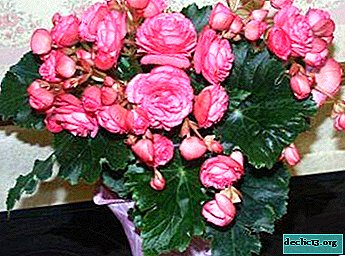 Incorrect lighting. Blooming begonias love the sun, but direct rays are contraindicated for them. In the shade, too, the plant will refuse to bloom.
Incorrect lighting. Blooming begonias love the sun, but direct rays are contraindicated for them. In the shade, too, the plant will refuse to bloom.- Lack of moisture. In a dry room for humidification, you need to put additional containers with water or steam generators.
- Uncomfortable temperature. For proper and development begonias need the right temperature. In the summer period - 20-23ºС, in the winter no more than 20-23ºС.
- Drafts. Begonia should be protected from sharp cold air currents.
- Nutrient deficiency. Timely top dressing and initially correctly selected soil will help to avoid the lack of flowering.
Diseases and pests
- Powdery mildew. Fungal disease, characterized by a white coating on the stem and leaves of the plant. The flowers do not bloom and dry. It manifests itself during high humidity on cloudy days in autumn and winter due to the formation of drip condensation on the leaves.
- Gray rot. The gray rot fungus affects the entire plant: flowers, fruits, leaves, branches and shoots. Bacterial spotting Characterized by the appearance of watery spots on the leaves. Leaves and flowers turn black and die.
- Nematode. White filamentous worms parasitizing on the tubers of a plant. The infected tissue of the flower degenerates, decays and then dies.
- Spider mite. The most dangerous pest that appears in warm and dry rooms. Larvae and adults live on the underside of the begonia leaves and its stems, braiding everything with a white web, on which they lay their eggs. The tick feeds on the juice of the plant, which causes the death of flowers.
- Aphid. Lives in large colonies, damaging all young parts of the flower. It multiplies very quickly, eats the juice of the plant, bending and mutilating it. The breeding time of this parasite is spring and early summer.
Useful video
Below in the video you can see how to properly grow and care for begonias at home.
Conclusion
The everlasting begonia is a wonderful decoration for your home or garden. She is beautiful and tender. Her variety of species will not leave indifferent any sophisticated grower. It is a real pleasure to look after one flower or a whole flower bed, and without a doubt, you will receive many positive emotions and the wonderful mood that this amazing plant gives.

 Incorrect lighting. Blooming begonias love the sun, but direct rays are contraindicated for them. In the shade, too, the plant will refuse to bloom.
Incorrect lighting. Blooming begonias love the sun, but direct rays are contraindicated for them. In the shade, too, the plant will refuse to bloom.